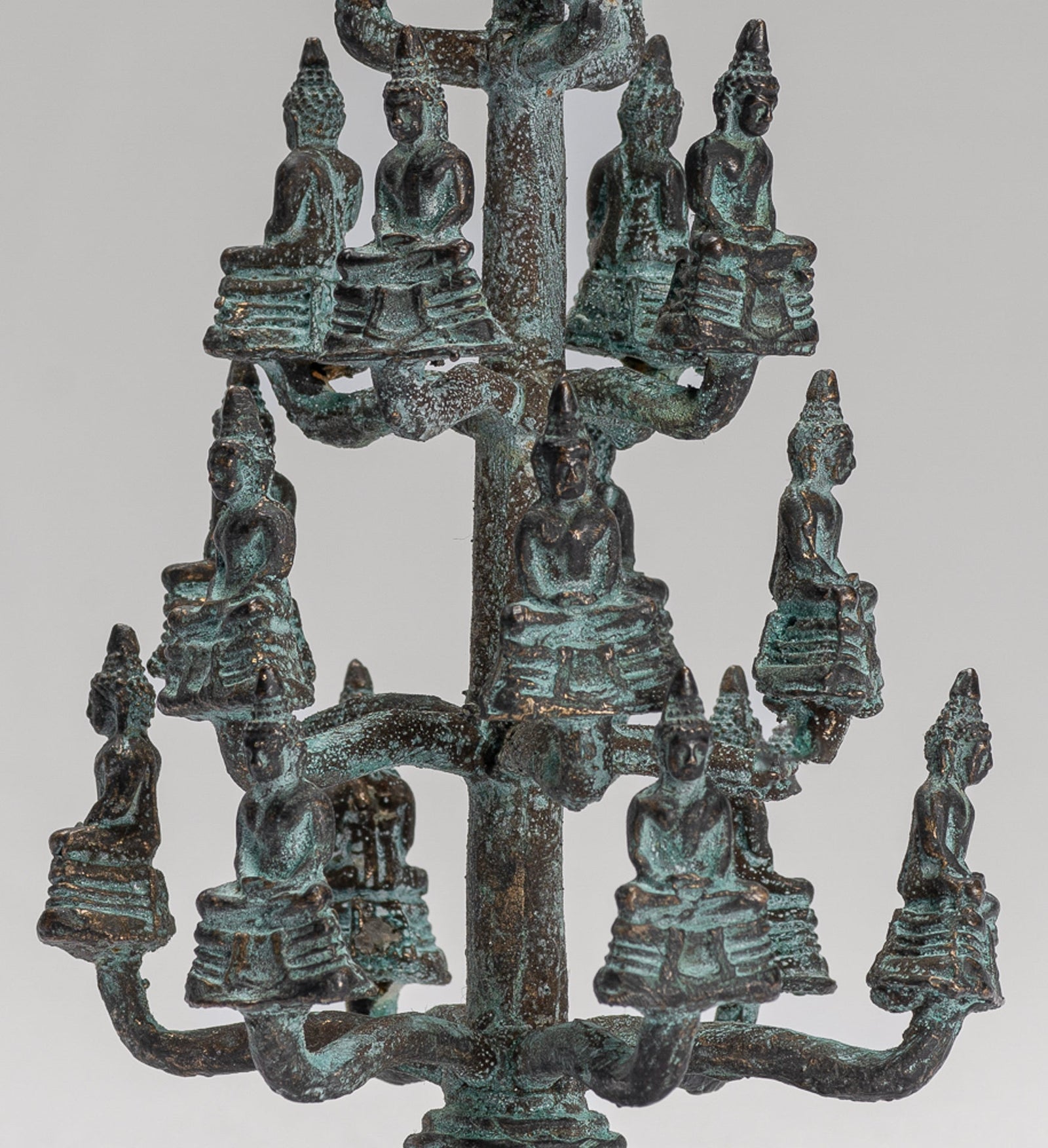
🧘♂️ Yoga y la imagen sagrada: cómo la iconografía hindú y budista dio forma a la práctica
El yoga, uno de los sistemas más antiguos y profundos de desarrollo espiritual, ha sido más que un conjunto de posturas físicas o técnicas de respiración. Arraigado en Filosofía india antigua, El yoga abarca una rica tradición de disciplina mental, vida ética, quietud interna y unión con lo divino.
A medida que esta tradición evolucionó, fue profundamente influenciado por los paisajes religiosos a su alrededor, particularmente hinduismo y Budismo.
Una de las formas más poderosas en que esta influencia se manifestó fue iconografía—La representación visual y simbólica de seres divinos, principios filosóficos e ideales espirituales. Desde la meditación de Shiva hasta las estatuas serenas de Buda, las imágenes jugaron un papel vital en la configuración de cómo se entendió, practicó y transmitió el yoga a través de las generaciones.
📜 Raíces del yoga en la filosofía india
Las primeras referencias a las prácticas yóguicas aparecen en el Rig Veda (c. 1500 a. C.), pero la filosofía más estructurada del yoga se codificó más tarde en textos como:
-
El Upanishads
-
El Bhagavad gita
-
El Yoga Sutras de Patanjali
-
Varios Tantras
En todas estas fuentes, el yoga se describe como un medio para Une al yo individual (Atman) con la conciencia universal (Brahman), o para darse cuenta de la impermanencia de sí mismo y alcanzar la liberación (Moksha o Nirvana).
Las tradiciones de yoga se desarrollaron a lo largo de múltiples caminos.Raja Yoga (Meditación), Bhakti Yoga (devoción), Karma Yoga (acción desinteresada), Hatha Yoga (disciplina física)—Muyo de los cuales dibujó imágenes y significado de las tradiciones visuales del hinduismo y el budismo.
🕉️ Influencia hindú: yoga y los íconos de lo divino
🔱 Shiva como Adi Yogi (el primer yogui)
En hinduismo, Shiva a menudo se representa como el Adi yogui—El profesor original del yoga.
-
Sentado en meditación profunda, con cabello enmarañado, el tercer ojo, y un serpiente Alrededor de su cuello, Shiva encarna la quietud y el dominio sobre los sentidos.
-
A menudo se le retrata sentado sobre el Monte Kailash, simbolizando el Altura de la realización espiritual.
-
El lina, un símbolo de energía divina, también está estrechamente vinculado a las meditaciones yóguicas en Conciencia sin forma.
Esta iconografía ha influido profundamente posturas de meditación yóguica (āsana) y el ideal de concentración separada (dhyāna).
🐍 Iconografía Kundalini y Chakra
El concepto de Kundalini—La energía de serpiente enrollada en la base de la columna vertebral es una poderosa metáfora visual de Hinduismo tántrico que se volvió central para Hatha y Kundalini Yoga.
-
El siete chakras se imaginan como Centros de energía en forma de loto alineado a lo largo de la columna vertebral.
-
Cada chakra está asociado con color, deidad, símbolo y mantra, derivado de textos tántricos y yógicos.
-
Visualizarlos durante la meditación ayuda a los yoguis a ascender de estados de conciencia más bajos a más altos.
Este sistema de anatomía interna simbólica se encuentra entre las contribuciones más visualmente llamativas de la iconografía hindú a la práctica yóguica.
🎨 Otras deidades hindúes clave en el yoga
-
Ganesha: A menudo invocado al comienzo de la práctica a eliminar los obstáculos—Se se ve sentado en postura meditativa, a veces con un símbolo de loto u OM.
-
Hanuman: Un símbolo de devoción, fuerza y flexibilidad—El homónimo de Hanumanasana (pose de divisas).
-
Krishna: Como el orador del Bhagavad gita, Krishna enseña Karma yoga (acción desinteresada), y su flautase convierte en un símbolo de la llamada interna divina.
-
Durga y Kali: Representar el poder de transformación, coraje y batalla interior sobre el ego.
Estas deidades aparecen en Altares, templos y estudios de yoga, continuando dando forma a cómo los practicantes se relacionan con el yoga como un camino espiritual.
☸️ Influencia budista: yoga en el camino hacia la iluminación
Mientras que el yoga tiene sus raíces en las tradiciones pre-budistas, Budismo prácticas yóguicas refinadas y transformadas a través de su énfasis en Mindfulness, impermanencia y no solo.
🧘♂️ El Buda en meditación
La imagen más icónica del budismo: el Buda sentado en Dhyana mudra (Gesto de meditación) - Compéate en una plantilla para postura yóguica y comportamiento:
-
El postura de patas cruzadas con la columna recta se convirtió en el modelo para Padmasana (pose de loto).
-
El ojos cerrados o medio cerrados enfatizar mirada y conciencia.
-
La expresión serena y las manos aún evocan samadhi, o absorción meditativa profunda.
Dichas imágenes han tenido un impacto duradero en cómo se enseña y se representa la meditación en las tradiciones de yoga en todo el mundo.
🌄 Bodhisattva imágenes y virtudes yóguicas
El budismo también introdujo el ideal del bodhisattva—Un ser que busca la iluminación no solo para sí mismos sino también para todos los seres sintientes.
-
Imágenes de Avalokiteshvara (Lokeshvara), El Bodhisattva de la compasión, a menudo muestra múltiples armas y caras serenas, recordando a los practicantes de servicio desinteresado y atención plena.
-
Manjushri, el Bodhisattva de la sabiduría, empuña una espada para cortar la ignorancia, simbolizando el discriminatoria cultivado en meditación.
Estas imágenes influyen en virtudes yóguicas como Karuṇā (compasión), prajñā (sabiduría) y Śīla (conducta ética).
🔍 Mandalas y prácticas de visualización
En Budismo de Vajrayana, las prácticas yóguicas se representan visualmente a través de mandalas—Diagramas geométricos sólidos del universo, utilizados en meditación avanzada.
-
Los practicantes visualizan deidades dentro de los mandalas, internalizando cualidades divinas.
-
Estas formas se integraron en Yoga tántrico, influyendo en cómo forma y símbolo puede conducir a falta de forma.
Incluso los practicantes de yoga modernos pueden usar Yantras (contrapartes hindúes de mandalas) como herramientas meditativas.
🖼️ Temas iconográficos compartidos en el yoga hindú y budista
A pesar de sus diferencias, las tradiciones hindúes y budistas comparten varios temas visuales clave que influyen profundamente en el yoga:
| Tema | Ejemplo hindú | Ejemplo budista |
|---|---|---|
| Quietud y concentración | Shiva en meditación | Buda en Dhyana Mudra |
| Geometría sagrada | Sri yantra | Mandala |
| Transformación | Kali o Kundalini Rising | Vajrayogini en budismo tántrico |
| Centros de energía | Ruedas de chakra con deidades | Vientos internos (Vayu) en el budismo tántrico |
| Gesto y mantra | Mudras y Bija Mantras | Mudras y Mantras en la deidad yoga |
🎨 Yoga en el arte y escultura del templo
Los templos en todo el sudeste asiático e India presentan representaciones escultóricas de posturas yóguicas y deidades meditativas:
-
Angkor Wat (Camboya): Muestra Shiva, Ascetics y Devas en posturas yóguicas.
-
Java y Bali (Indonesia): Caracterizar íconos tántricos sentados en meditación yóguica.
-
Cuevas de Ajanta y Ellora (India): Representar bodhisattvas y yoguis en Dhyana.
Estas representaciones visuales actuaron como Guías instructivas e inspiradoras, especialmente antes de que los manuales escritos fueran ampliamente accesibles.
✨ Conclusión: el yoga como un ícono vivo de imágenes sagradas
El yoga, como filosofía y práctica, siempre ha sido inseparable de las imágenes sagradas que lo rodean.
Desde la quietud serena del Buda Meditante hasta la energía cósmica de Shiva, desde la serpiente de Kundalini en espiral hasta los Chakras radiantes que brillan con pétalos de loto (La iconografía proporciona la arquitectura espiritual de la conciencia yóguica.
Estas imágenes no son meras decoración. Ellos son herramientas meditativas, compañeros rituales, y mapas espirituales, guiando al practicante hacia adentro hacia la quietud, la perspicacia y la unidad.
🪷 Explore la iconografía yógica y sagrada en HDasianArt
En Hdasianart.com, ofrecemos una colección curada de esculturas inspiradas en yoga, incluido Shiva como Adi Yogi, Budas meditantes, íconos relacionados con chakra, y deidades tántricas. Cada pieza refleja la conexión atemporal entre Imagen espiritual y sabiduría encarnada.
Trae a casa un pedazo de patrimonio sagrado Eso inspira tu viaje de yoga todos los días.


